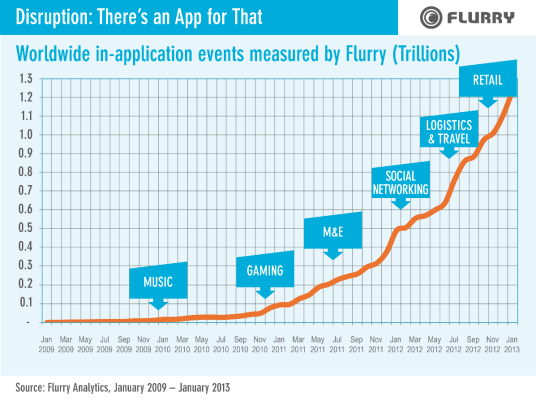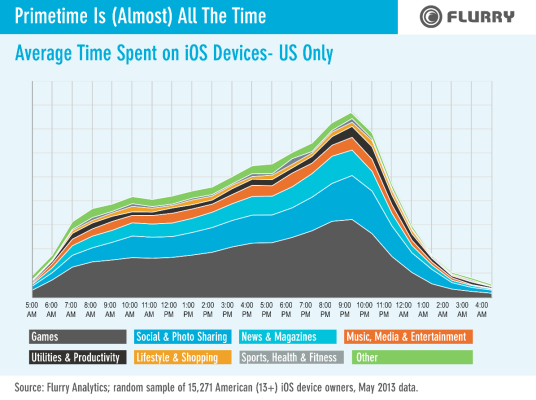Every once in a while, we like to take a step back to try to put the mobile revolution in perspective. We last did that in December. And guess what? Growth globally is unchecked since our last major end of year update and, if anything, is accelerating.

The first article comes from Venture Beat, which looked at Flurry’s data on mobile growth. Their conclusions (check out the graph above) were many, but across the board Flurry seems to be enjoying explosive growth world wide (especially in China where almost a quarter billion smart phones/tablets are active). Flurry has an installed base on over 1 billion (did you say billion?) devices, leading to generation of more then 3 trillion app events (e.g., analytics data points) per day. That’s a lot of events. Of particular interest in the article and the linked blog report found here is a graph of mobile usage throughout the day. What’s fascinating about this graph is the frequency of usage throughout the day, peaking at prime time, which has been historically owned by TV. So not only is the mobile usage growing just by the shear number of devices and apps on those devices, but also by the frequency of use, which is continuous. By the way, read Flurry’s blog for some other interesting insights on behavior of Mom’s (hint: they like iOS) and adoption in China (hint: 1 billion consumers).

So with some stats on growth overall in our back pocket, let’s pick out a couple of news items of interest. And the easiest place to get news? Public announcements:
- The first and most talked out is Facebook’s stunning mobile growth. In their most recent earnings announcement Facebook claimed 60% growth in mobile ad revenue, now constituting over 40% of their overall revenue of $1.2 billion. Facebook also noted they have over 800 million active monthly mobile users.
- Google, though getting dinged in their earnings call for not being on top of their mobile strategy, is still making a lot of money from mobile, with revenue on pace to double in 2013.
- Here’s another data point: Pandora’s mobile revenue is up 105% this year, accounting for over 2/3 of their overall revenue.
- Baidu, the Chinese Internet company, gained more than 10% in the market as a result increasing mobile revenue.
- And don’t forget EA, which saw 27% growth in mobile revenue.
So, big growth continues. Growth globally continues. And public companies, as well as plenty of smaller outfits, are enjoying the mobile ride. Let’s wrap up with a nod to Localytics, which has 20 cool stats on mobile growth, too numerous to quote here, but highly interesting.
Go mobile.






